�
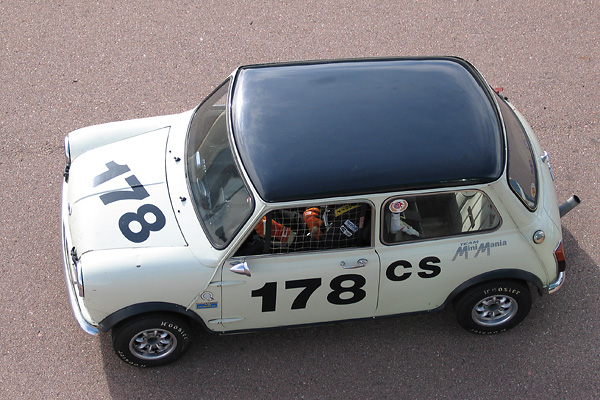
�
�
Bruce McCalister's 1968 Austin Mini Cooper S MkII Race Car
� � Owner: Bruce McCalister� City: Leadville, Colorado
� Chassis: 1968 Austin Cooper S Mk2
� Engine: 1275cc A-series
� Race prepared by: owner �
�
Mini and Cooper S MkII Models
��
Although one of the most popular and iconic car models in history, the original Mini wasn't�
particularly profitable. By 1967, the Mini had been in production for eight years and British�
Motor Corporation management felt it was due for a styling facelift and some modernization.�
Remarkably little money was available for development or production tooling so only a short�
list of changes could be made. The result was the Mini MkII.�
�
Almost simultaneous to the decision to create a MkII, BMC management decided to withdraw the�
Mini from the United States market at the end of 1967. This decision spared the company quite�
a lot of development and tooling expense; there would be no need to update the Mini to suit�
increasingly tough federal safety standards.�
�
Mk2 body changes were mostly subtle. The various Mini variants received new badges, different�
front grilles, slightly larger rear windows, larger taillamps, and more substantial trunk lids.�
Sliding door windows carried over from the MkI, evidently because roll-up windows would have added�
too much cost. (Minis produced in Australia had with roll-up windows from March 1965 and Riley and�
Wolseley badged Minis came with roll-up windows from October 1966, but this upgrade wasn't extended�
across the line until phase-in of the Mini MkIII.) Under the skin? A new steering rack and new steering�
arms gave a tighter turning radius. A fully synchronized manual gearbox was planned for the MkII,�
but its availability was delayed until late 1968.�
�
As before, Cooper S variants were available through both Austin and Morris distribution channels.�
Along with a different front grille and special badges, the Cooper S variants featured larger�
displacement engines and other enhancements. (The Cooper S MkII came standard with a 1275cc�
engine, whereas the intermediary Cooper MkII engine was 998cc and other Mini MkII models were�
equipped with 848cc engines.) Both Austin and Morris versions of the MkII Cooper S are rare in�
the world and extremely scarce in the United States. In a production period that spanned from�
September 1967 to January 1970, only 6,329 Cooper S Mk2 Minis were built. Probably less than 500�
survive. For perspective, total production of Mini MkII models over roughly the same time period�
came to ~429,000 worldwide.�
�
�
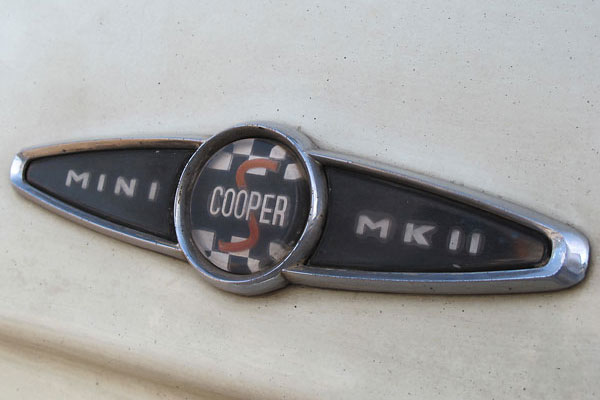
�
Mini Cooper S MkII badge.
�
 �
�
�
�
Bruce McCalister's Cooper S MkII
��
The 1968 Mini Cooper S MkII we're featuring here was purchased new in very late 1967 by Ralph Covell�
of Riverside California expressly for racing. It was a replacement for Covell's earlier Mini Cooper S�
which had served him through two runnings of the Canadian Shell 4000 rally. The Shell was probably the�
toughest long distance rally in the world at that time. Covell had previously entered his Mini Cooper S�
in the 1966 Shell 4000 with navigator Ken Bertino of Long Beach CA. He returned and drove in the 1967�
rally with his wife Maureen as navigator. Fewer than half of entrants finished either race. Some�
components from Covell's earlier Cooper S were transferred to this MkII.�
�
Despite a long and active road racing career, Covell's Cooper S MkII has never been wrecked or�
repainted and its level of preparation has remained remarkably close to the way it was originally�
raced.�
�
�
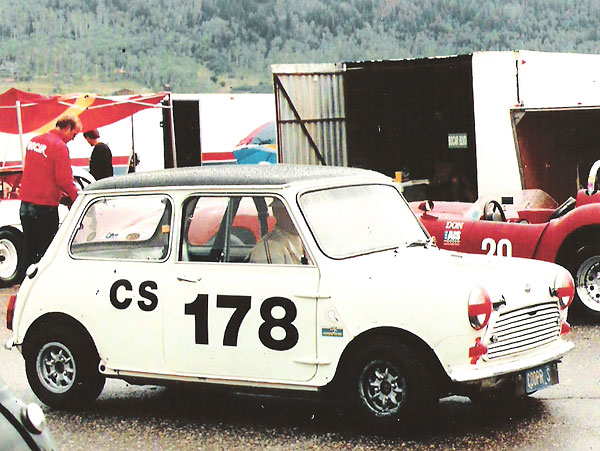
�
Ralph Covell prepares to race his 1968 Mini Cooper S at Steamboat Springs, circa ~1989.
�
(Photo copyright Bruce McCalister. Used here by exclusive permission.)
�
�
At some point Ken Bertino acquired a half interest in the MkII, and the two good friends shared the car�
until when Ralph moved away from California in 1972. At that point he sold his half of the Cooper S to Ken.�
Ken continued to race it for two more years before selling the car to another friend. It was street-legal,�
but hardly ever driven through this period. When the friend passed away, Ken and Ralph bought the Cooper S�
back. From 1988 through about 2005 the Mini was raced in occasional events, mostly with the Rocky Mountain Vintage�
Racing Association. (The friends shared the car though about 2000, when Ken decided to retire from racing and�
sell his share.)�
�
Bruce McCalister bought the Cooper MkII in 2006, and has been racing it ever since. �
�
Bruce has three Minis. The other two Minis have rubber cone suspensions, but his Cooper S MkII�
came with an almost entirely stock Hydrolastic suspension. It's very possibly the last Mini still racing�
on a Hydrolastic suspension in the United States. Bruce reports that this car's ride is quite a bit more�
comfortable than his other two Minis, but it does tend to dive forward on braking. When it does so the�
Hydrolastic fluid transfers rearward, further lifting the car's rear end and unsettling the car. �
�
�
IMPORTANT ANNOUNCEMENT
�
BritishRaceCar.com will have to cut back plans for continued growth if we can't find more financial support.
�
If you like what you've found here, and you want to see more, please click here and follow the instructions.
�
Readers like you keep BritishRaceCar.com online and growing through voluntary financial contributions.
�
�
There can be a disconnect before how a car feels and how it really performs. Bruce says this Mini's�
body rolls a lot while turning, but that it had remarkable "stick". He has experimented with�
increasing roll stiffness, but this car is quicker without a rear anti-sway bar.�
�
Another characteristic of the car is that its engine revs very smoothly, right up through 7000rpm.�
�
Incidentally, Bruce usually identifies this car as�
a 1968 even though it was purchased and titled in late 1967 as a 1967. In the United States,�
there's never been a single standard for model year designations. Some states identify cars on�
registration documents by the year in which they were built, but other states have historically�
used the manufacturer's "model year" or the date of that particular car's importation.)�
�
Features and Specifications
�| Engine: | �BMC A-Series 1275cc four cylinder engine, bored to 1312cc.�
Almost 12:1 static compression ratio.�
Single Weber 45DCOE carburetor.�
K&N oiled gauze air filter.�
123ignition electronic distributor.�
K&N oil filter. | �
| Cooling: | �stock copper and brass radiator (made by Coventry Radiator & Presswork Co. Ltd.)�
Two blade steel engine-driven fan.�
Mocal aluminum oil cooler. | �
| Exhaust: | �long center branch header from Seven Enterprises.�
Flowmaster muffler. | �
| Transmission: | �straight cut, close ratio, dog ring gearbox.�
Stock Mini gear shifter.�
Limited slip differential. �
CV joints. | �
| Front Susp.: | �Hydrolastic suspension. | �
| Rear Susp.: | �Hydrolastic suspension.�
KAD adjustable camber bracket set. | �
| Brakes: | �(master) Lockheed tandem circuit master cylinder with integral reservoir. Remote mounted booster. � (front) stock Lockheed disc brakes. � (rear) Mini Sport Superfin finned aluminum brake drums. | �
| Wheels/Tires: | �Minilite 10x6 8-spoke aluminum wheels.�
Hoosier T.D. 165/70-10 tires. | �
| Electrical: | �Deka AGM battery mounted in an Everstart Snap-Top marine battery box. | �
| Instruments: | �(left to right)�
Stewart Warner fuel pressure (0-10psi),�
oil pressure (0-100psi),�
oil temperature (140-320F),�
voltmeter (10-16V),�
ammeter (+/-60A), and�
water temperature (100-265F) gauges.�
AutoMeter Pro-Comp UltraLite tachometer (0-10,000rpm). | �
| Fuel System: | �Fuel Safe Systems fuel cell.�
Stock S.U. fuel pump. | �
| Safety Eqmt: | �Sparco Evo drivers seat.�
Sabelt six point cam-lock safety harness.�
(Cobra passenger seat.)�
Luisi steering wheel.�
FireBottle 5# centralized fire suppression system. | �
| Weight: | �~1350#. | �
Please support the sponsoring companies who make www.BritishRaceCar.com possible, including:
� �
 �
�
�
�
Engine Installation
��
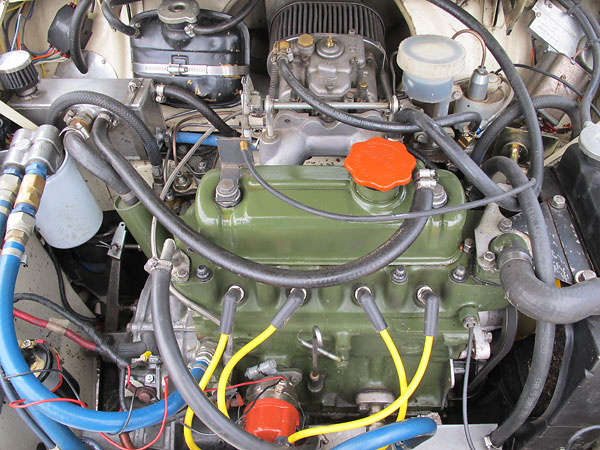
�
BMC A-Series 1275cc four cylinder engine, bored to 1312cc.
�
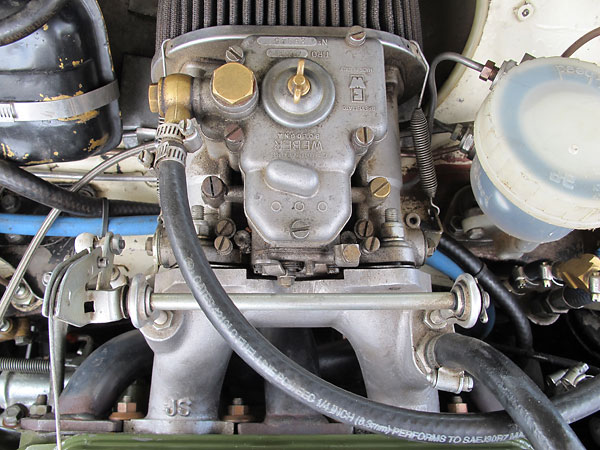
�
Single Weber 45DCOE carburetor and K&N oiled gauze air filter.
�
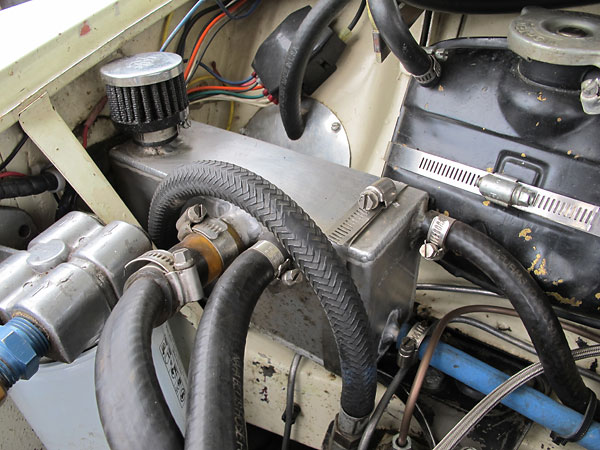
�
Custom fabricated aluminum crankcase breather tank.
�
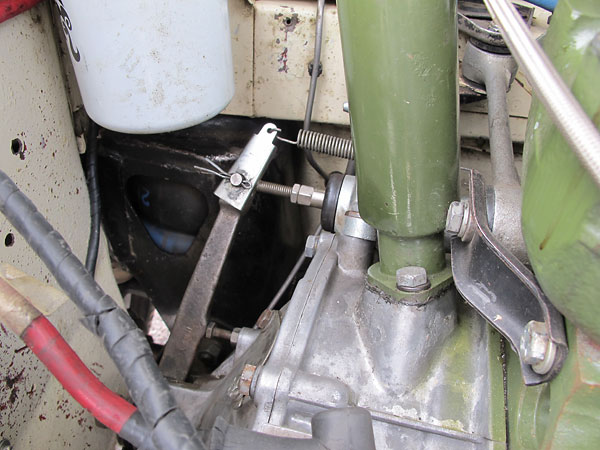
�
Girling clutch slave cylinder.
�
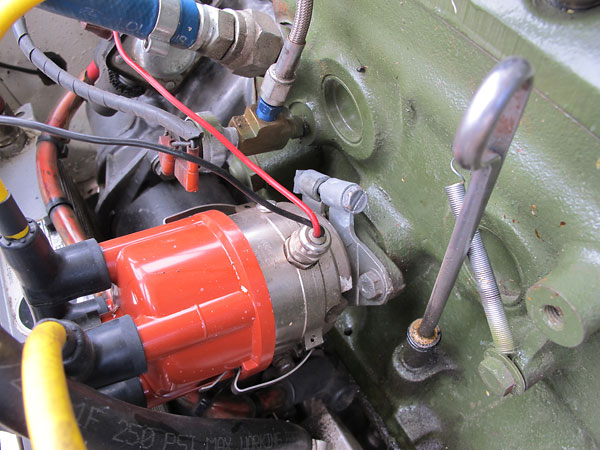
�
Bruce replaced the original Lucas distributor with a 123ignition electronic unit. Made in Belgium,
�
123ignition distributors offer a variety of pre-programmed ignition advance curves. Breaker points,
�
centrifugal advance weights and springs, and vacuum diaphragms have all been eliminated.
�
Premium versions are completely user programmable from a laptop via USB cable connection.
�
Please support the sponsoring companies who make www.BritishRaceCar.com possible, including:
� �
 �
�
�
�
�
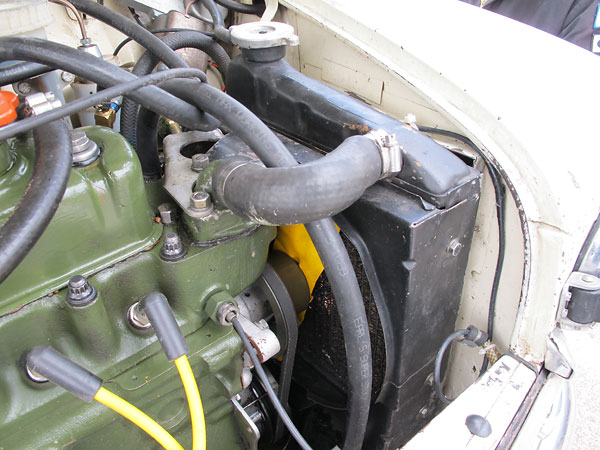
�
Stock copper and brass radiator by Coventry Radiator & Presswork Co. Ltd., and stock two-blade
�
engine driven fan. Generally, two blade fans were supplied on home-market Minis. Most exported
�
Minis were supplied with six blade fans.
�
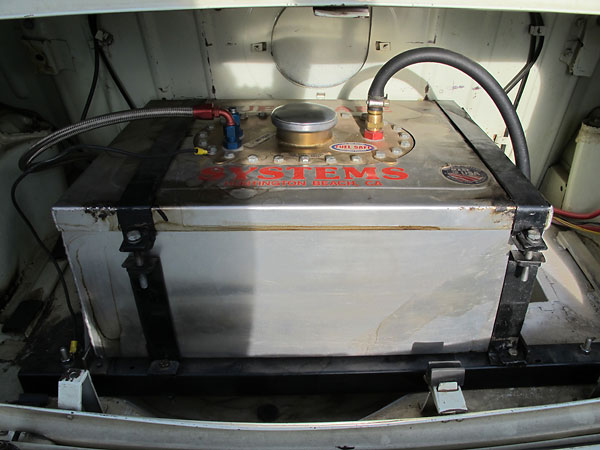
�
Fuel Safe Systems fuel cell.
�
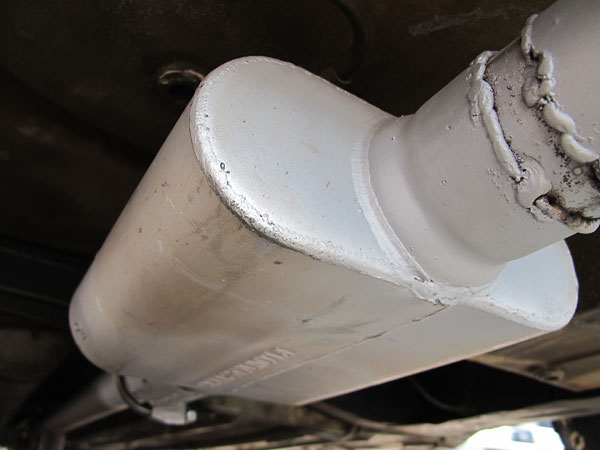
�
Flowmaster muffler.
�
�
Front Suspension
��
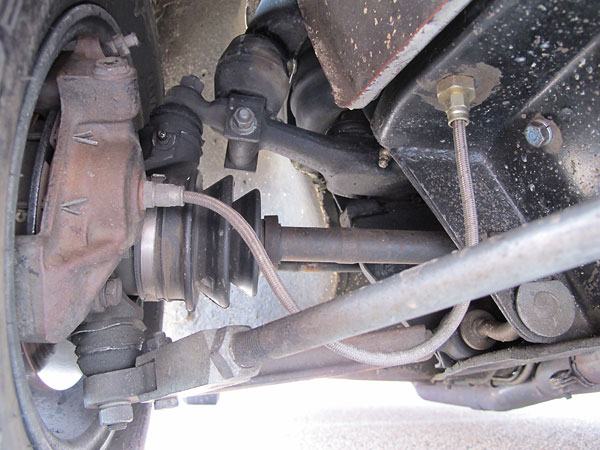
�
Front suspension and brakes are entirely stock, except for braided stainless steel brake hoses.
�
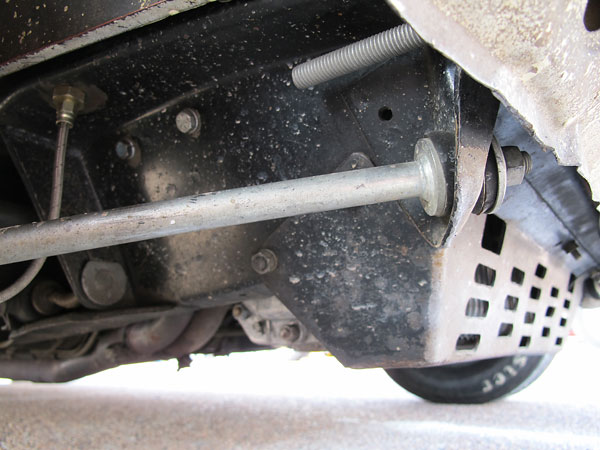
�
Rally equipment: a robust steel brush guard protects the Mini's finned aluminum oil sump.
�
�
Enjoying this article? www.BritishRaceCar.com is partially funded through generous support from readers like you!
�
To contribute to our operating budget, please click here and follow the instructions.
�
(Suggested contribution is twenty bucks per year. Feel free to give more!)�
Rear Suspension
��
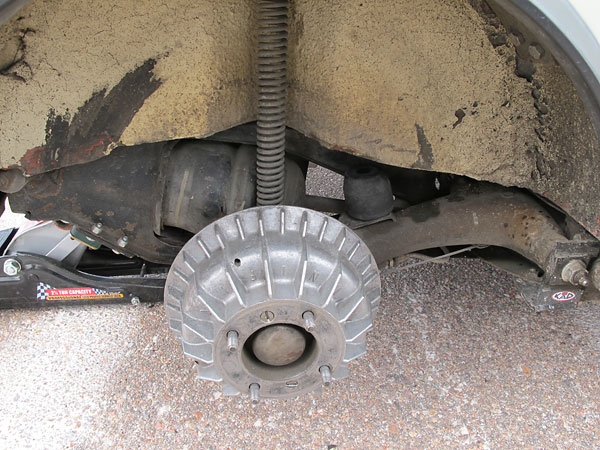
�
Hydrolastic suspension gives a more comfortable ride than more competition oriented alternatives.
�
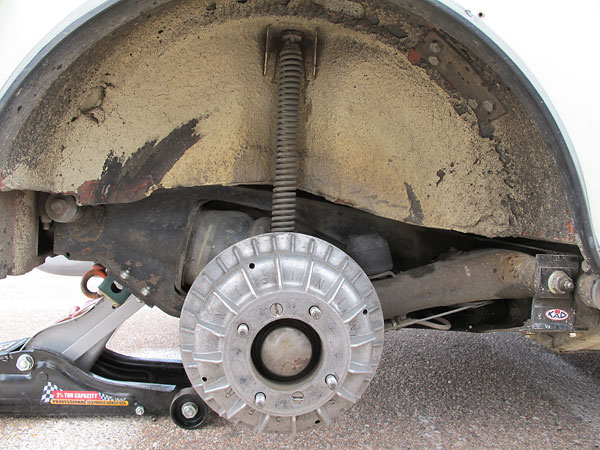
�
Mini Sport Superfin finned aluminum brake drums.
�
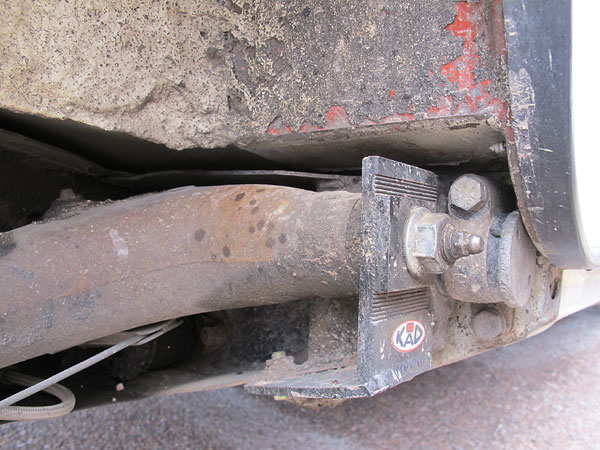
�
KAD adjustable camber bracket set.
�
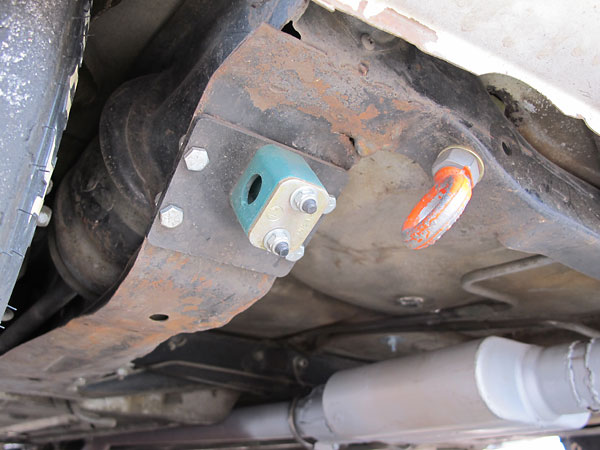
�
Bruce has experimented with adding a rear anti-sway bar, but currently races with it removed.
�
�
Interior
��
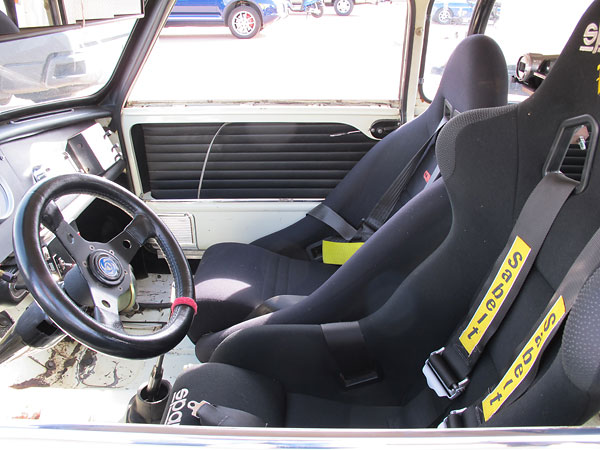
�
Sparco Evo drivers seat and Sabelt six point cam-lock safety harness. Cobra passenger seat.
�
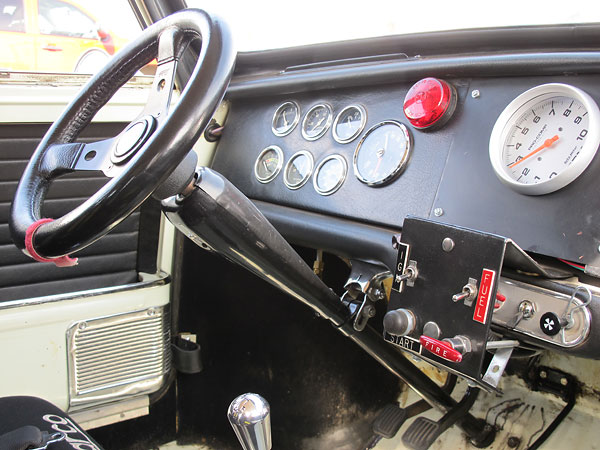
�
AutoMeter Pro-Comp UltraLite tachometer (0-10,000rpm).
�
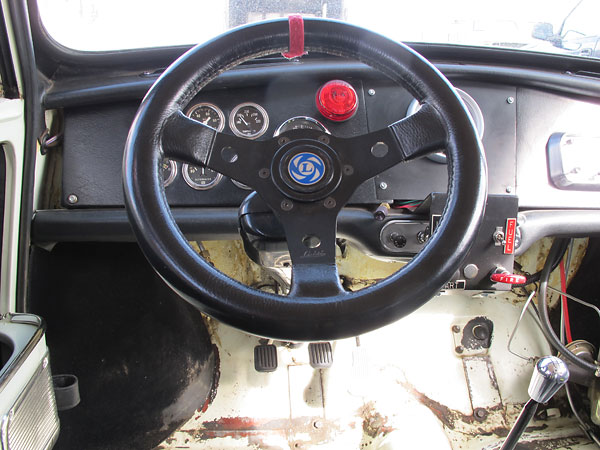
�
Luisi steering wheel.
�
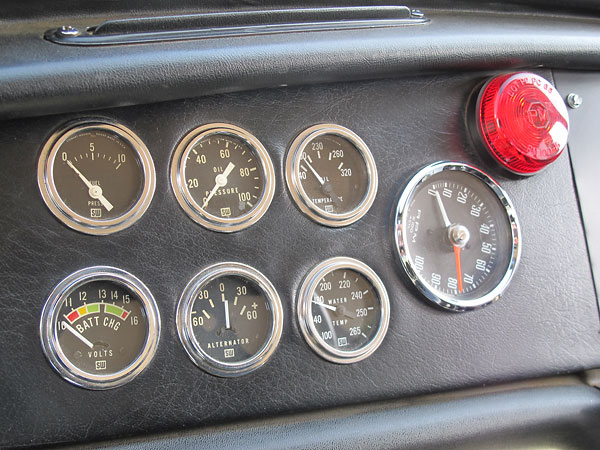
�
Stewart Warner gauges: fuel pressure, oil pressure, oil temp, voltmeter, ammeter, and water temp.
�
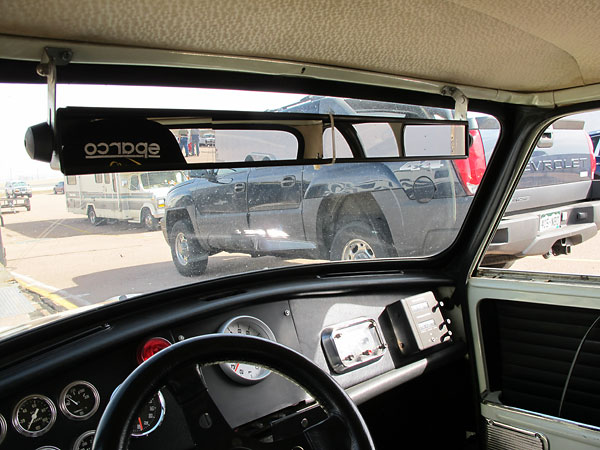
�
Wink four panel rear view mirror.
�
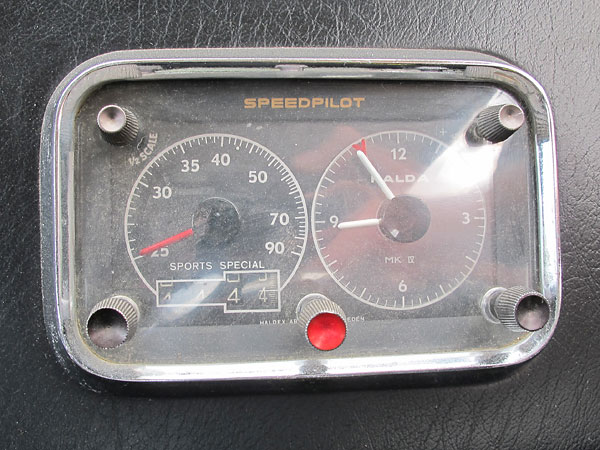
�
Halda SpeedPilot is a precision mechanical timekeeping device. When rallying, the driver/navigator
�
team is challenged to maintain specified average speeds over various trip legs. The navigator sets
�
the lefthand dial to the specified speed. The clock at right has two minute hands! One minute hand
�
shows actual elapsed time (for up to eight days) while the other minute hand tracks along under it.
�
The other (red) minute hand, however, is showing how much time SHOULD HAVE elapsed... so the
�
navigator can readily see if the team is driving too slow or too fast, and by how many minutes.
�
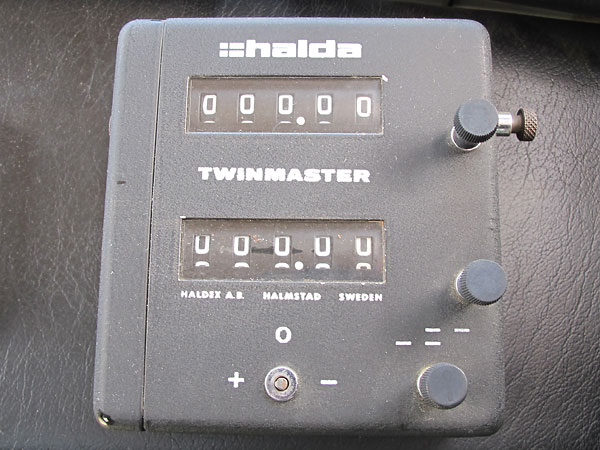
�
Halda Twinmaster is a precision mechanical odometer that reads to 1/100th of a mile (or kilometer).
�
It has two read-outs, so the navigator can separately measure a day's or a rally section's elapsed
�
distance and at the same time monitor the distance between road book instructions. The navigator
�
may of course zero the read-outs separately. The bottom-left knob (missing) lets the navigator turn
�
off the odometer or run it backwards in the event of an off-course excursion.
�
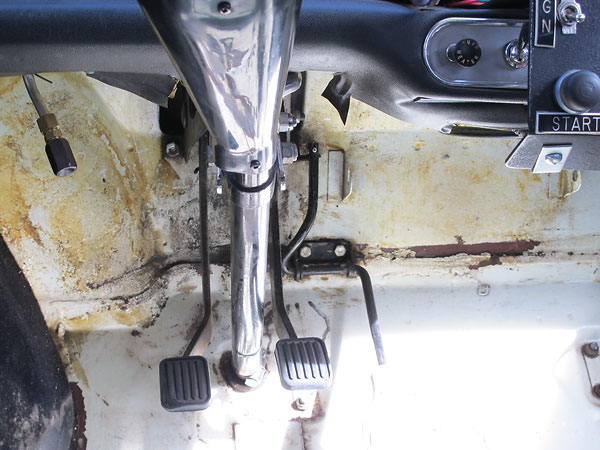
�
Top left corner: one of the two passenger-compartment fire extinguisher nozzles.
�
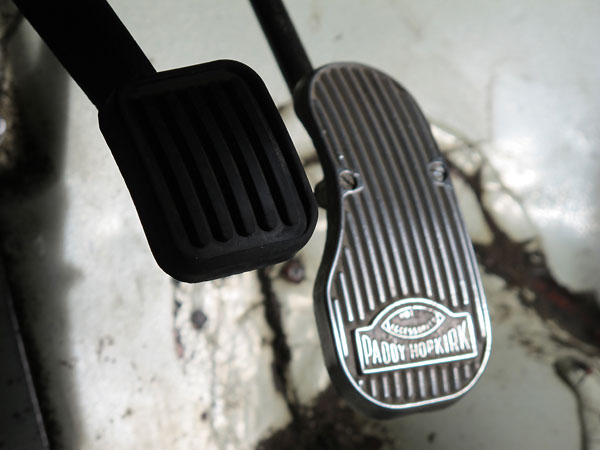
�
Paddy Hopkirk throttle pedals are popular for all sorts of classic British sports cars, but they really
�
suit a Mini. Hopkirk and co-driver Henry Liddon won the 1964 Monte Carlo Rally in a Mini Cooper S.
�
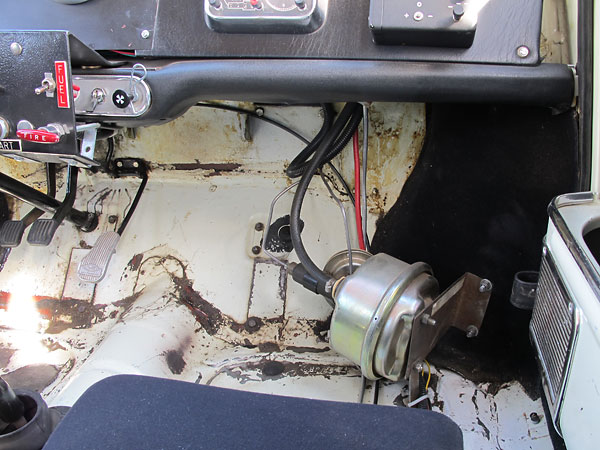
�
This power brake booster appears to be stock, but obviously it's not in the stock location.
�
BMC originally installed power brake boosters on the passenger side of the engine compartment.
�
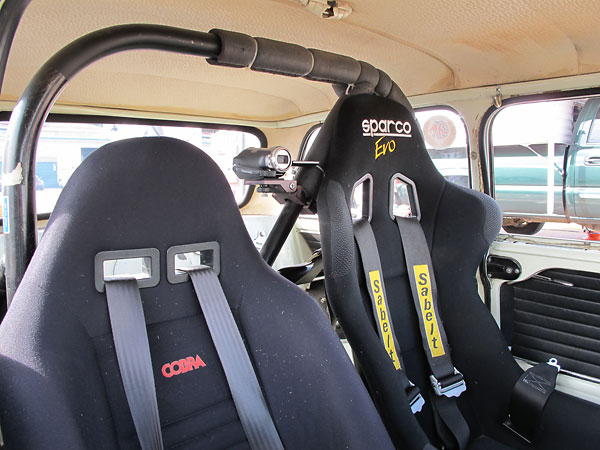
�
45 years on, Bruce McCalister's Cooper S MkII racecar still wears its original headliner & door cards!
�
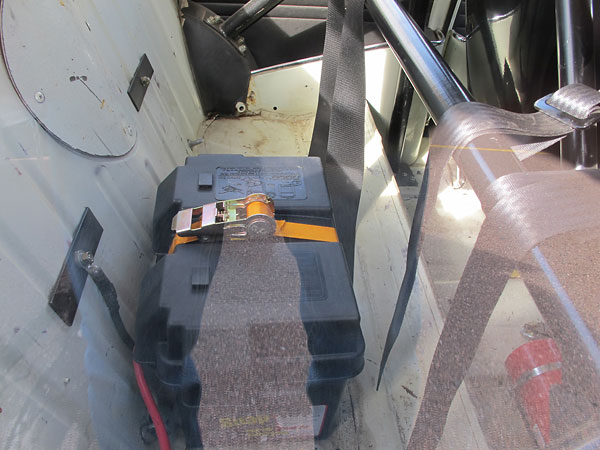
�
Deka AGM (absorbed glass mat) battery mounted in an Everstart Snap-Top marine battery box.
�
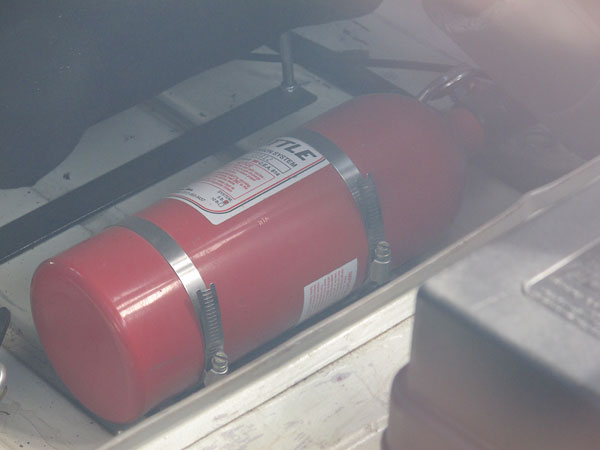
�
FireBottle 5# centralized fire suppression system.
�
�
Exterior
��
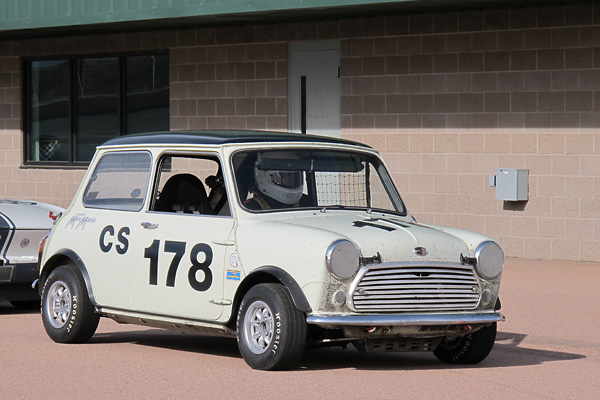
�
We got a big kick out of watching Bruce's little Mini mix things up with much more powerful racecars at
�
Pikes Peak International Raceway near Colorado Springs during the Rocky Mountain Vintage Racers'
�
Octoberfast/Spooktacular 2011 event. In Saturday afternoon's feature race, Bruce lapped the 1.400
�
mile circuit at 1:13.686 for an average speed of 68.4mph to finish 8th overall of 19 starters.
�
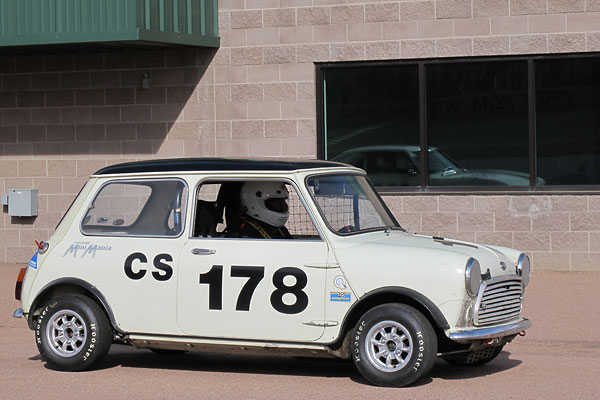
�
The Mini commenced production at Austin's Longbridge plant in August 1959. The classic Mini was retired
�
there in 1999, with press reports quoting a worldwide total production figure of 5,498,804 cars. (1971 had
�
been the high point, with 318,475 produced.) Morris Minis were produced at Cowley. Over twenty smaller
�
factories assembled Minis abroad, with varying levels of local content due mainly to tariff requirements.
�
Chief among these: Italy ~400,000, Australia ~176,000, and South Africa ~104,000.
�
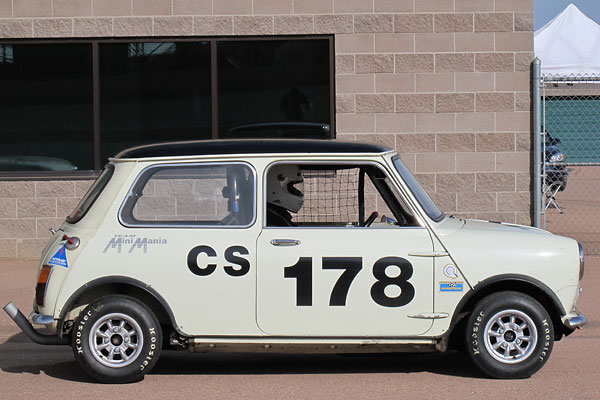
�
Bruce McCalister's Cooper S MkII still had stock two-piece sliding door windows when he bought it.
�
He found that they slid around while racing, so he removed them and put them into safe storage.
�
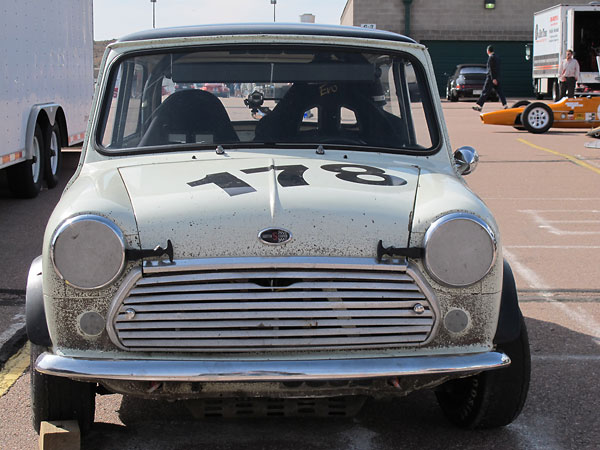
�
Mini Cooper S MkII front grille, specially mounted on two studs for easy removal.
�
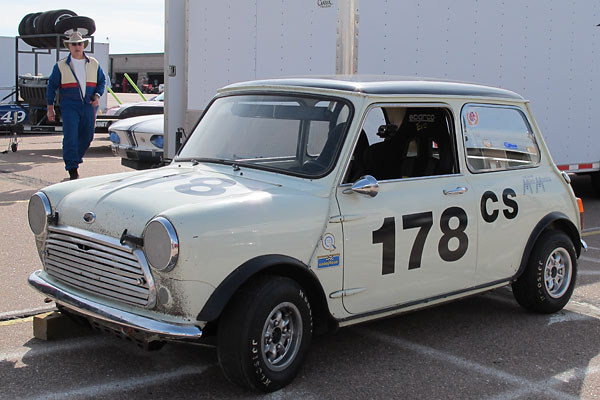
�
The Mini design team must have been feeling quite bold when they decided to break
�
fashion and turn body seams and door hinges into prominent exterior styling features.
�
Think about the statement it makes: every single inch of interior room is precious.
�
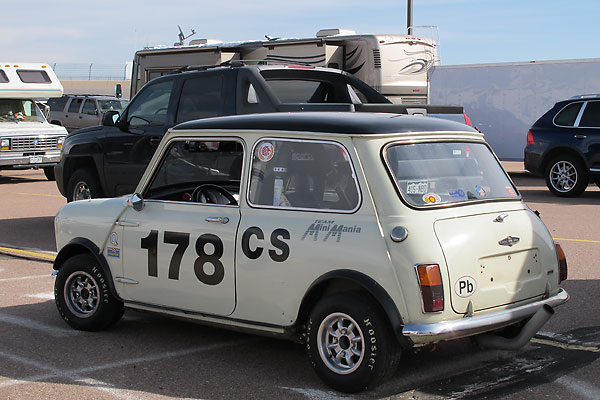
�
Some MkII changes were so subtle, you might wonder why they bothered. You almost need to
�
hold a ruler up to the C-pillar to tell that the rear window has been widened.�
(Click here to compare.)
�
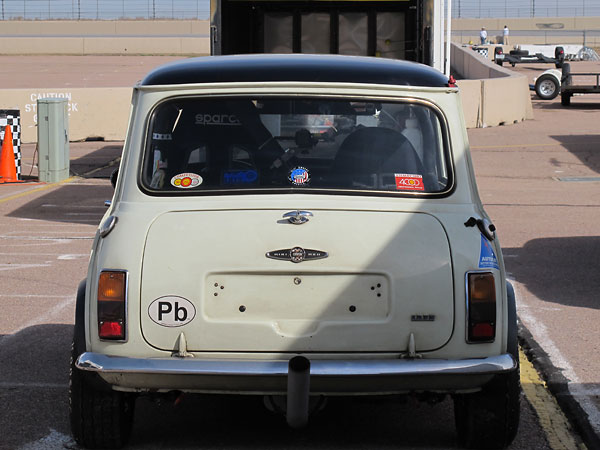
�
First generation Minis (produced from 1959 through 1967) had smaller, oval taillamps.
�
One of the most obvious changes for the MkII was a swap to larger, rectangular taillamps.
�
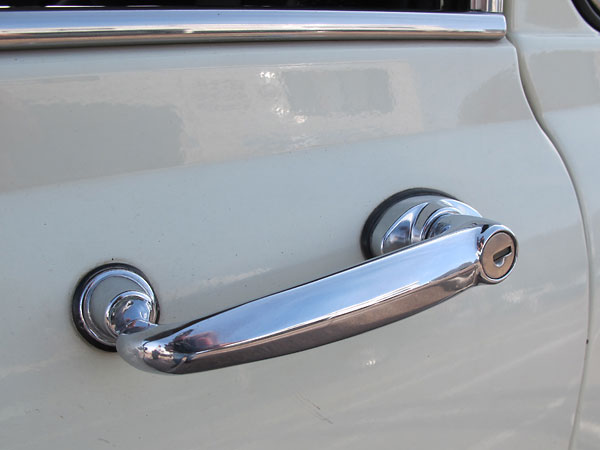
�
Austin Mini exterior door handle.
�
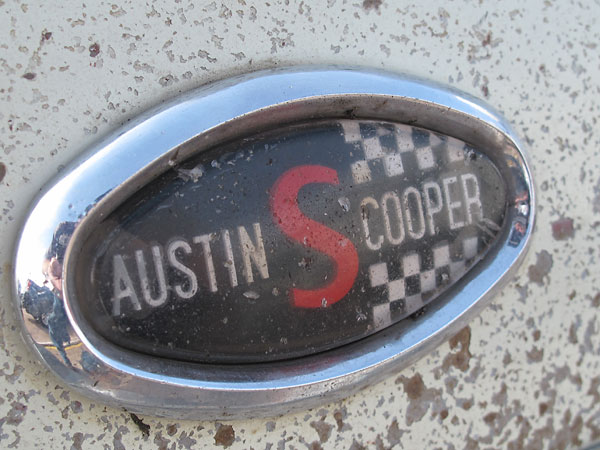
�
Austin S Cooper
�
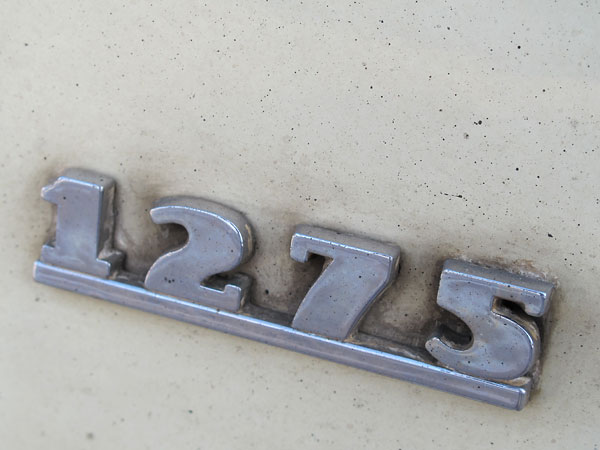
�
1275
�
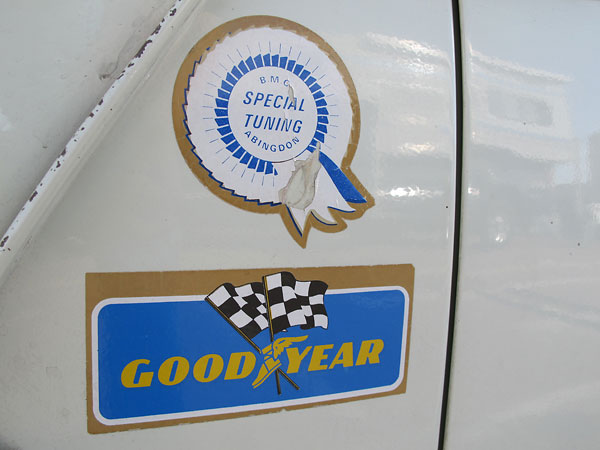
�
BMC - Special Tuning - Abingdon / Goodyear
�
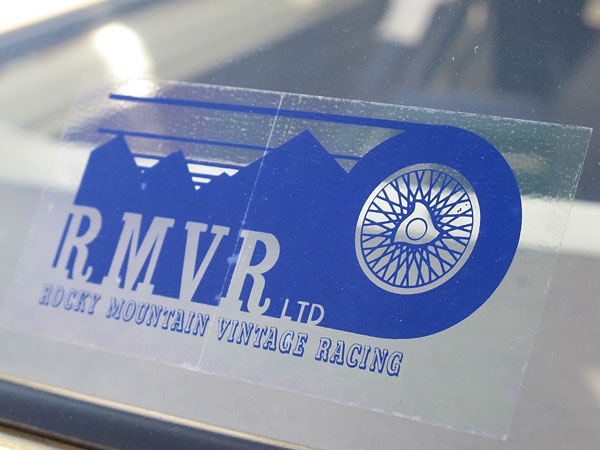
�
RMVR Ltd. - Rocky Mountain Vintage Racing
�
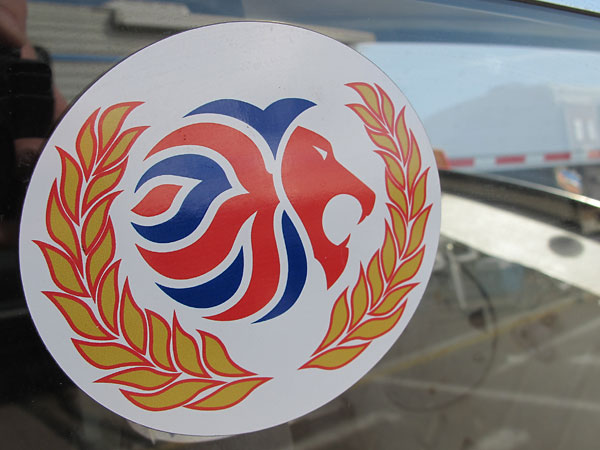
�
Stylized lion / union jack logo sticker for participants of The 2009 Mini Can-Am Challenge event,
�
held at Brainerd MN. Bruce finished 8th in the vintage class against some big name Mini racers.
�
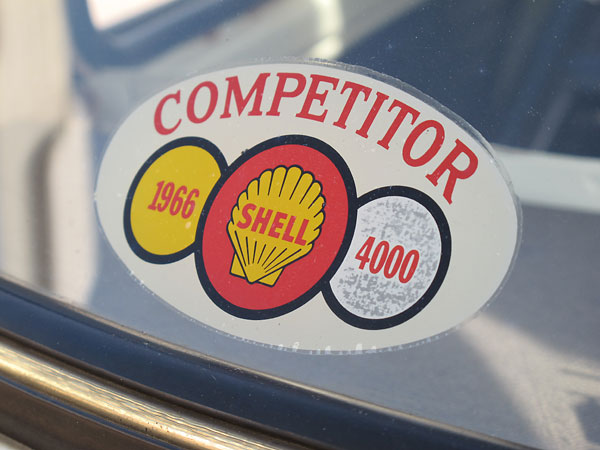
�
"Competitor: 1966 Shell 4000" - Through the 1960s, Canada hosted to the world's longest rally. It was
�
one of the five rallies that comprised the world championship, and it was the only FIA-sanctioned
�
rally in North America. From 30 April through 6 May 1966, competitors raced down rural roads from
�
Vancouver all the way to Quebec City: 4000 miles, eight closed stages, and a brief stop in Ottawa!
�
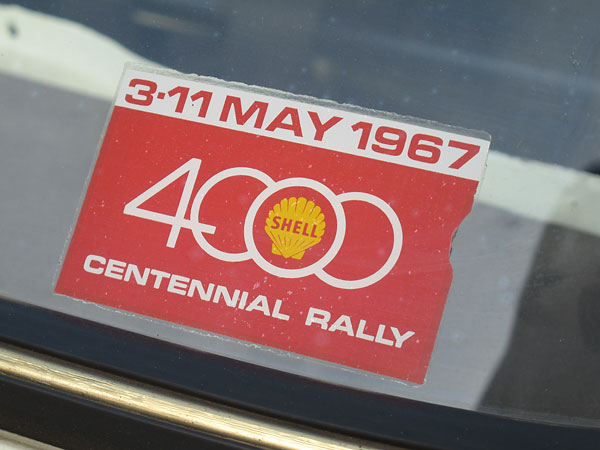
�
"3-11 May 1967 - Shell 4000 Centennial Rally" - Exactly 100 cars entered the rally, which seemed
�
appropriate as it was a celebration of Canada's 100th year of independence from Great Britain.
�
Less fun for Canadians: Brit Roger Clark won. (Canadians dominated previous years.) This time,
�
competitors actually traveled 4500 miles from Vancouver to Montreal with twelve closed stages.
�
Compared to other rallies, "The Shell" put driving and endurance over navigation skills.
�
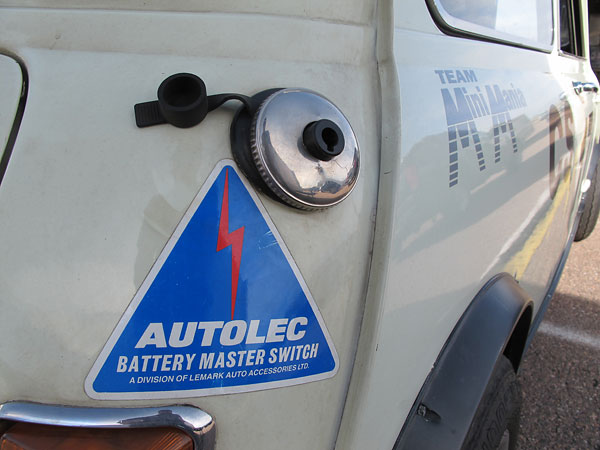
�
Autolec battery master switch mounted into a fuel filler cap. Autolec is the premier supplier of
�
FIA-approved kill switches. (Grayston makes a knock-off.) These switches have two extra sets
�
of contacts: one for shunting the alternator to ground through a resistor (to protect its diodes)
�
and the other for disconnecting the ignition coil circuit.
�
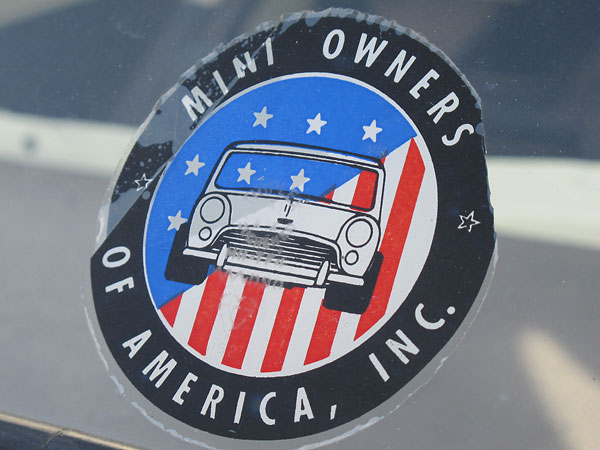
�
Mini Owners of America, Inc.
�
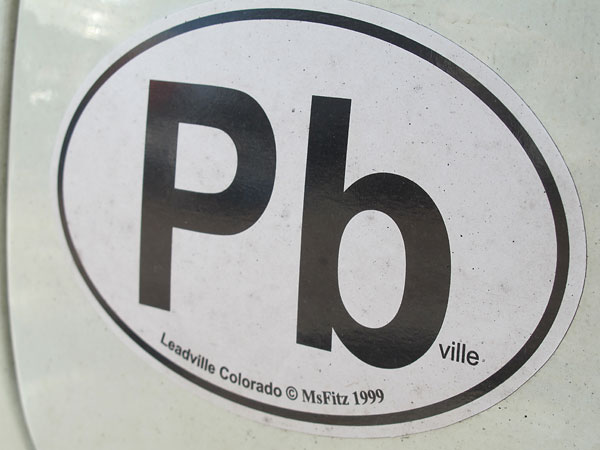
�
Pb: Leadville Colorado. (At 10,152 feet, Leadville is the highest city in the United States.)
�
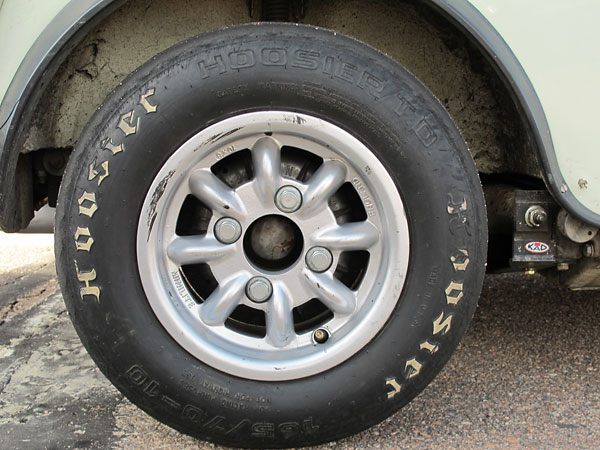
�
Minilite 10x6 8-spoke aluminum rear wheels and Hoosier T.D. 165/70-10 tires.
�
Bruce reports that a set of front tires are only good for about one race weekend.
�
�
�
Unless otherwise noted, all photos shown here are from October 2011 when we viewed the car at�
The Rocky Mountain Vintage Racers' "Octoberfast/Spooktacular" at Pikes Peak International Raceway�
near Colorado Springs, Colorado.�
All photos by Curtis Jacobson and Lisa Kerans for BritishRaceCar.com,�
copyright 2012. All rights reserved.
�
| If you liked this article, you'll probably also enjoy these: | �|||||
 | �
Rachel Nelson '65 Austin Mini | �
 | �
Terry Milnes '66 Austin Mini | �
 | �
Bob Polak '69 Mini Marcos | �
| You're invited to discuss anything you've seen here on The British Racecar Motorsports Forum! | �|||||
�
Notice: all the articles and almost all the photos on BritishRacecar.com are by Curtis Jacobson.
�
(Photos that aren't by Curtis are explicitly credited.) Reproduction without prior written permission is prohibited.
�
Contact us to purchase images or reproduction permission. Higher resolution images are optionally available.
�

 �
�